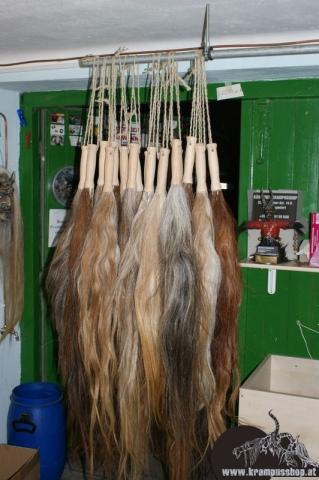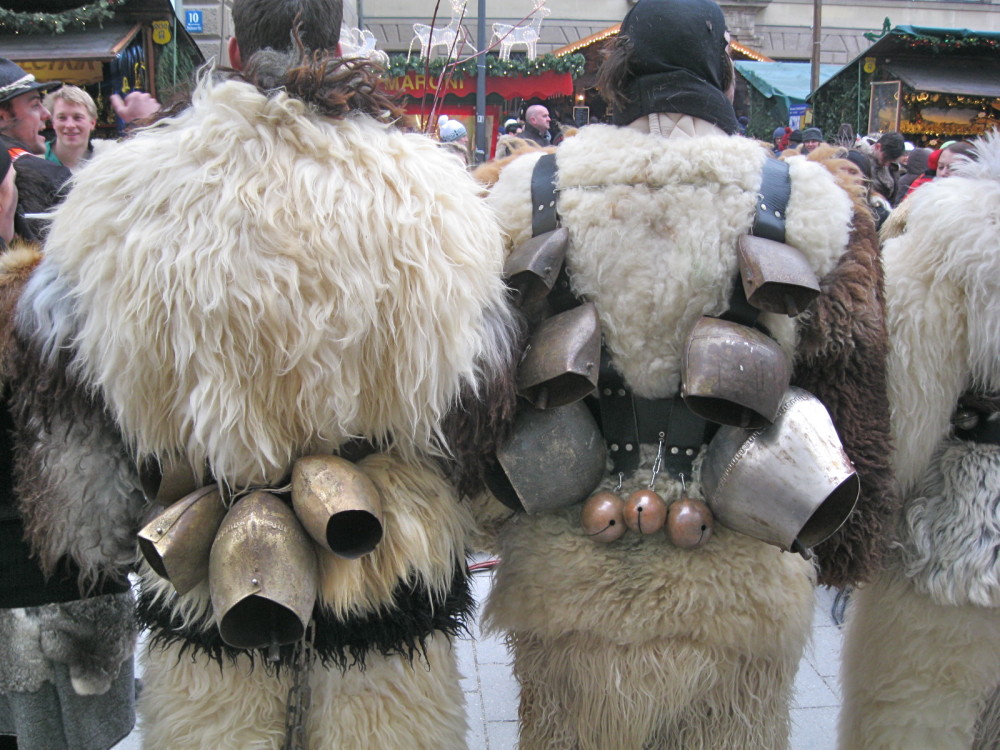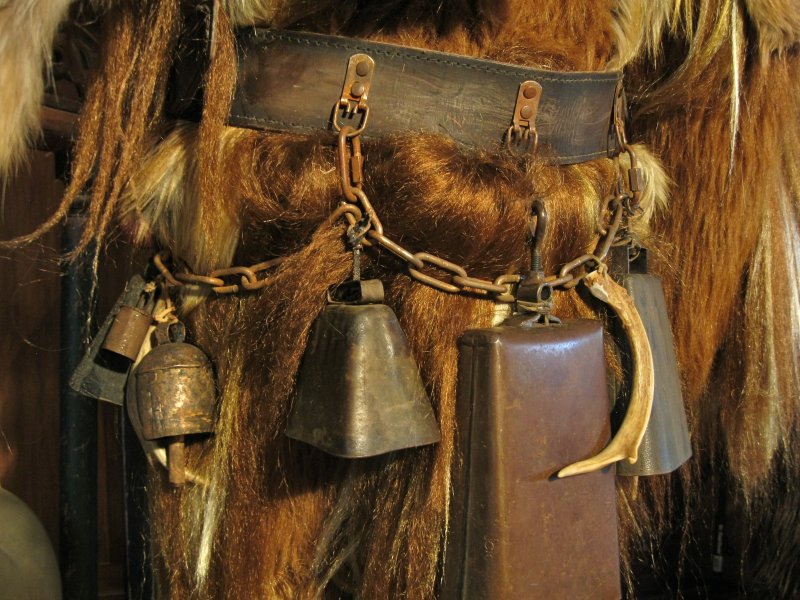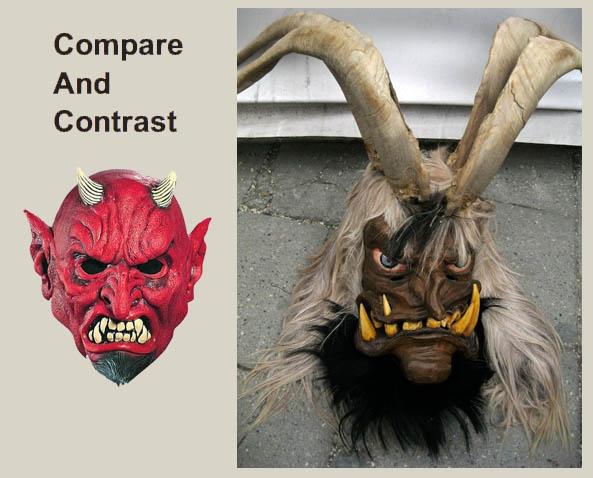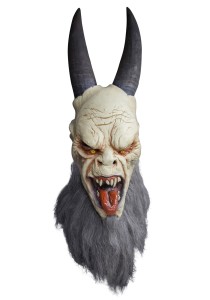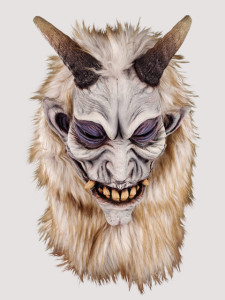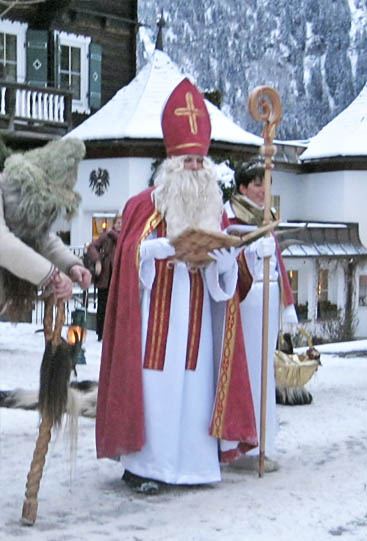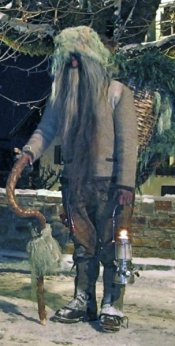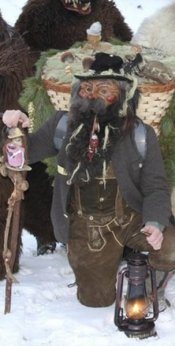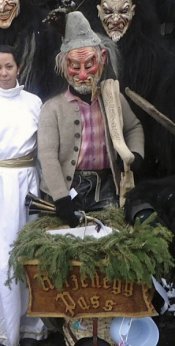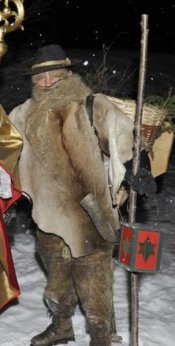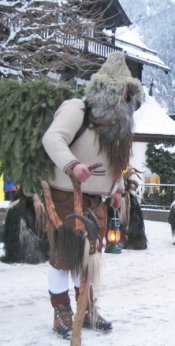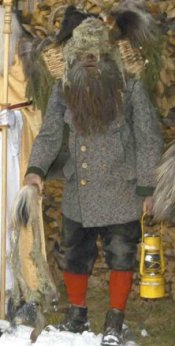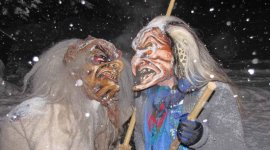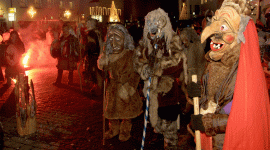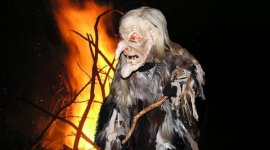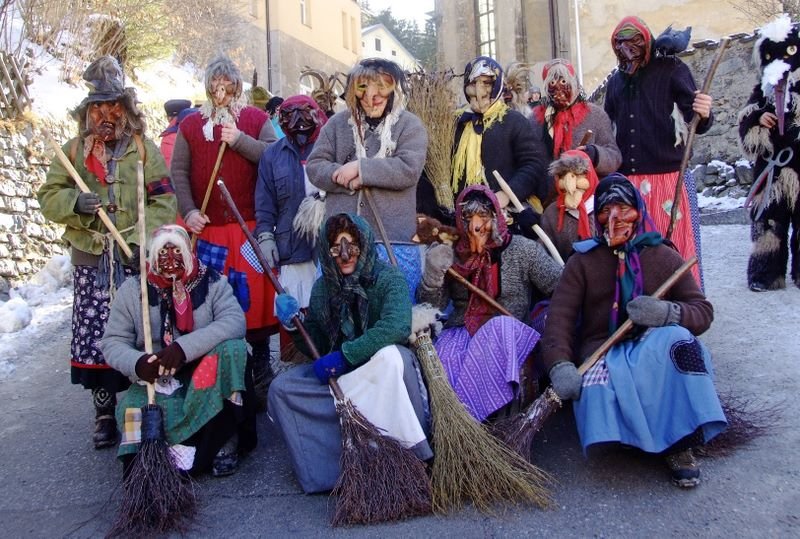Most people familiar with Krampus are familiar with his switches — but may be confused about their actual use. European Krampuses (these days) never hit children, though they may lightly and playfully strike older onlookers on the backside or, more likely, lower legs — never anywhere near the face or eyes. LA Krampus performers will follow that example with extra allowances made for the unfamiliarity of the tradition. Strict performance guidelines will be made available to all participants, and Krampus Los Angeles takes no responsibility for those who fail to review or comply with those guidelines.
Regardless of use, you may feel compelled to carry switches simply as an iconic part of a Krampus costume. However, in many regions switches never used, and a whisk made of animal hair is the preferred tool for the job (as in the picture above). While this hair whisk accessory may be less familiar to Americans than switches, it actually allows for more freedom because it can be wielded without fear of leaving scratches or injury. Generally, these are made from the tail of a horse or cow. They are relatively inexpensive when ordered from overseas (roughly $12 without shipping) whereas the equivalent amount of horse hair sold in the US to equestrians for weaving into their animals’ tails for shows would cost roughly $60-100.
If all of this sounds challenging, pricey or possibly distasteful, we suggest you consider making an alternative version using synthetic hair attached to some sort of handle (the same type of “braiding hair” you might want to add to your costume). Some synthetic hair is less suitable as it lacks the heft required. In those cases, just comb a little heavily watered down white glue through the hair to add the required body.
But you probably still want switches.
If so, just remember that what’s used in Europe typically comes from a tree with thin, flexible branches — birch, or possibly willow. A dry bundle of sticks you might be able to gather from a backyard or park may be too rigid or brittle and may break apart if merely brandished in the air for effect a few times. For this reason, it’s worthwhile to just pay for something suitably lightweight, uniform, and springy. “Primitive” style fireplace brooms sold as “cinnamon brooms” around the holidays are a pretty good stand-in, and are dirt cheap — $1.50 (at least during the off-season) at Moskatel’s-Michael’s downtown, and probably only a little bit more at other Michael’s craft outlets, decorator/florist shops, etc.
You may have also seen the Krampus with chains. Sometimes — but again by no means always — Krampus either carries chains as rattling noisemakers (used in conjunction with his bells) or may wear chains and cuffs to suggest his subordination to St. Nicholas and his infernal chain-gang status. While oversized foam or plastic chains are easy to find and conveniently lightweight for performers, they won’t do much as noisemakers and aren’t really every used in Europe.
As for the notorious basket into which the Krampus is said to stuff children, this is also hardly mandatory, and in some regions unheard of. One big reason for this is that anatomical real estate on the backside of a Krampus is almost always devoted to bells. Bells are much, much more commonly carried than baskets, and it’s rather hard to fit them both on one costume. You may have seen a disproportionate representation of baskets in postcard illustrations of the Krampus, but that’s because the aural effect of bells doesn’t really have much power in an illustration, whereas a few screaming children piled into a basket certainly does. However piling children into a basket on one’s backside in real life is neither practical nor advisable, so over the centuries the bells have always been more common in costuming situations. However, baskets are worn sometimes, and should you want one, we trust you to navigate your way to a thrift store where a wicker hamper can be had for cheap.

